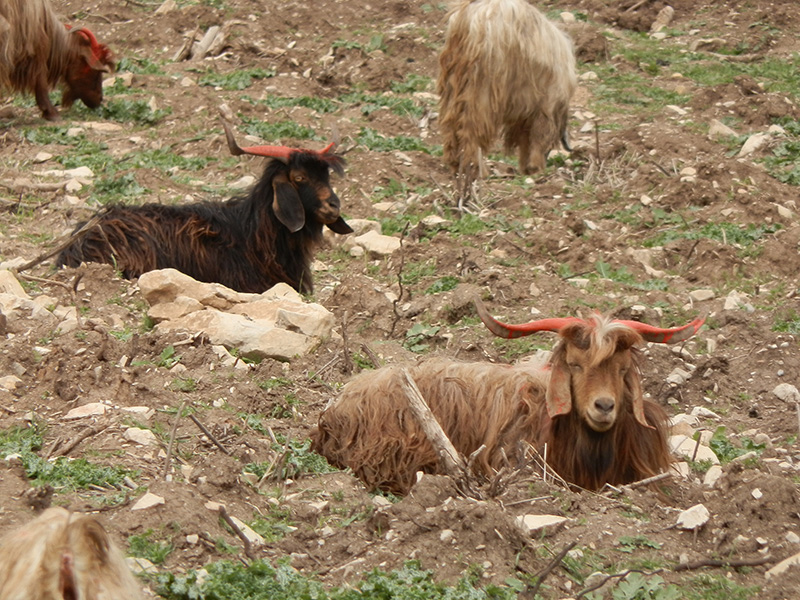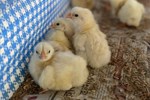New research traces origins of zoonotic disease to the Neolithic period
New research has investigated the possible origins of the common zoonotic disease brucellosis in the Neolithic period, a discovery which provides evidence for the previously unconfirmed hypotheses about the effects of farming on human and animal health and wellbeing.
The shift from hunting and gathering wild resources to farming and the control and husbandry of domestic animals and plants had fundamental and far-reaching repercussions for human ecology, demography, society and the environment. The development of farming changed the epidemiology of infectious diseases for both human and animal populations. Through bringing animals together in larger, denser herds, in close association with human communities, a stable conduit for exposure of humans to infection in their animals was established.
It has frequently been hypothesised that the origins of zoonoses (infectious diseases in animals which can be transmitted to humans) was a consequence of the adoption of farming, but these hypotheses were little evidenced – until now. The new findings will help to contribute to long-term perspectives to present and future concerns as animal management evolves to ensure sufficient and reliable food supply for the ever-growing global human population.

Using archaeological data to inform a disease transmission model, a team of academics from the Royal Veterinary College in collaboration with the University of Edinburgh, City University of Hong Kong, and University of Reading explored the potential role of early animal domestication in the origins of brucellosis as a zoonotic disease. Brucellosis is today’s commonest bacterial zoonosis in the world. It appeared that the circulation of the pathogen causing brucellosis, Brucella melitensis, could have been sustained even for low levels of transmission within goat populations of these Neolithic settlements. This was not only due to the presence of high goat population densities, but also to major modifications of the demographic characteristics of these populations. The selective harvesting of young male goats, likely motivated by the optimisation of food production, increased the transmission potential of brucellosis and promoted disease persistence within these goat populations. From the early stages of the development of animal farming, conditions were created for goat populations to become reservoirs of Brucella melitensis, promoting the exposure of humans to a new pathogen.
The findings support the view that the transition from food collection to production during the Neolithic transition while allowing for larger human population sizes resulted in significant adverse effects on human health and wellbeing. The study also demonstrates the importance of recognising the complexity of eco-systems, where it is often very difficult to obtain a holistic impression of the different types of impacts that a particular change in the system has.
Dr Guillaume Fournié, Research Fellow at the Royal Veterinary College, said: “It is generally accepted that the creation of large and dense animal populations has facilitated the emergence of infectious diseases in humans. However, the impact of changes in the demographic profiles of livestock populations on disease epidemiology requires further attention, as it may be a key factor in promoting disease transmission.”
Dr Robin Bendrey of the University of Edinburgh added that “such work can be used to target genetic research to those areas which are most likely to produce direct evidence for the presence of the pathogen in archaeological remains.”
The study was published in the February issue of the Royal Society Open Science Journal and was authored by Dr Guillaume Fournié (Royal Veterinary College), Professor Dirk Pfeiffer (Royal Veterinary College & City University of Hong Kong, and Dr Robin Bendrey (University of Reading and now of University of Edinburgh).
Press Office Contact
Uche Graves / Zoe White
T: 0800 368 9520
E: uche.graves@plmr.co.uk / zoe.white@plmr.co.uk
Notes to Editors
The Royal Veterinary College (RVC) is the UK's largest and longest established independent veterinary school and is a constituent College of the University of London. The RVC offers undergraduate, postgraduate and CPD programmes in veterinary medicine, veterinary nursing and biological sciences, being ranked in the top 10 universities nationally for biosciences degrees. It is currently the only veterinary school in the world to hold full accreditation from AVMA, EAEVE, RCVS and AVBC.
A research-led institution, in the most recent Research Excellence Framework (REF2014) the RVC maintained its position as the top HEFCE funded veterinary focused research institution.
The RVC also provides animal owners and the veterinary profession with access to expert veterinary care and advice through its teaching hospitals; the Beaumont Sainsbury Animal Hospital in central London, the Queen Mother Hospital for Animals (Europe's largest small animal referral centre), the Equine Referral Hospital, and the Farm Animal Clinical Centre located at the Hertfordshire campus.
RVC Press Release 15 February 2017
See other Press Releases.
You may also be interested in:
-
New research from the RVC on India’s antibiotic regulation identifies framework for policy development in livestock
The Royal Veterinary College (RVC) has led novel research on India’s 2019 ban on the use of …

